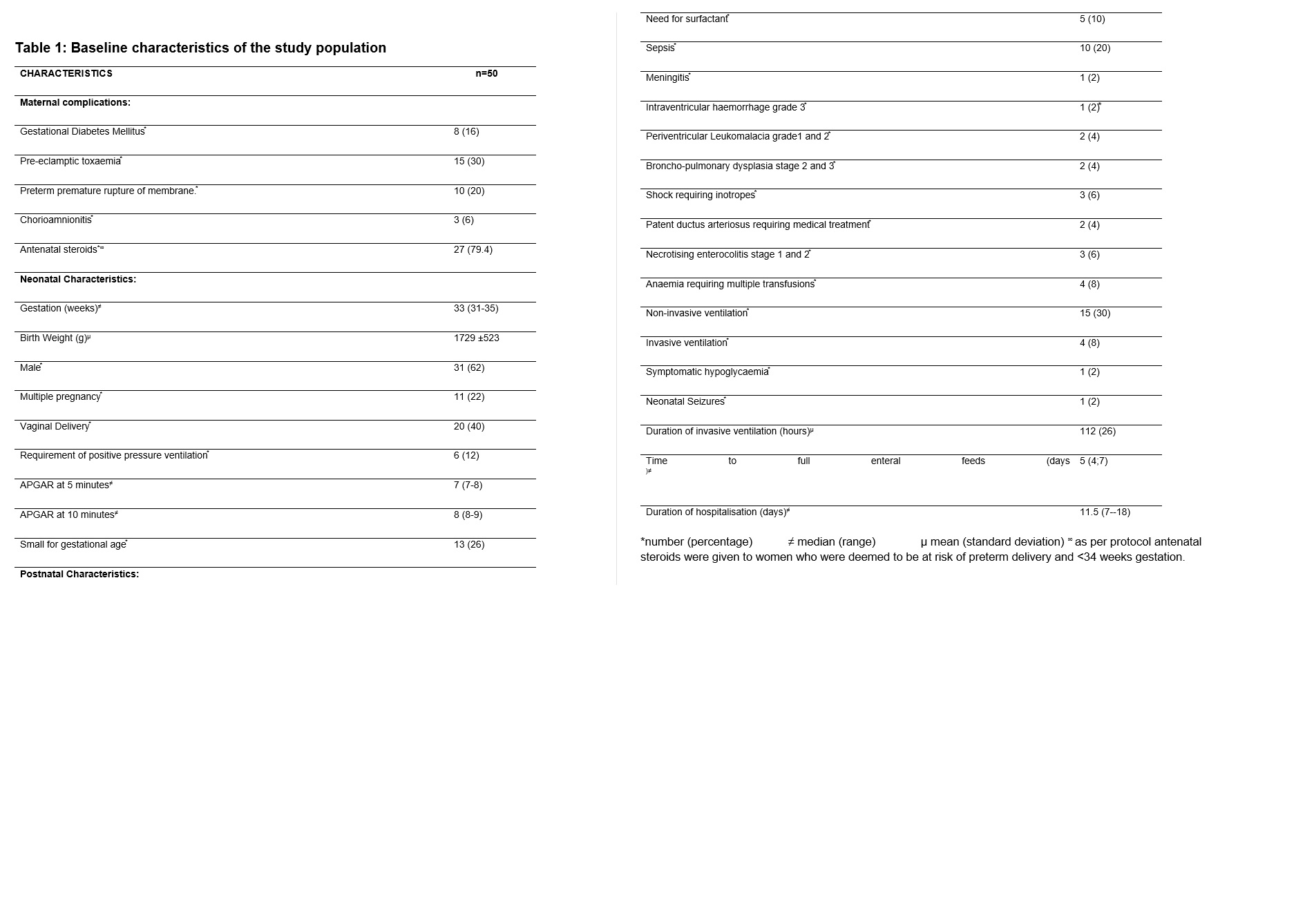Neonatal Neurology: Clinical
Category: Abstract Submission
Neurology 4: Neonatal Neurology Preterm Clinical
469 - Role of Amplitude-integrated Electroencephalography and General movement patterns assessment in preterm neonates for predicting neurodevelopmental outcome
Sunday, April 24, 2022
3:30 PM - 6:00 PM US MT
Poster Number: 469
Publication Number: 469.342
Publication Number: 469.342
Abhinav Sharma, RAM MANOHAR LOHIA INSTITUTE OF MEDICAL SCIENCES NEE DELHI, New Delhi, Delhi, India; Arti Maria, India, Delhi, Delhi, India; Nagaratna Vallamkonda, Ram Manohar Lohia Hospital, New Delhi, Delhi, India; Tapas Bandyopadhyay, ABVIMS and Dr. RML Hospital, New Delhi, Delhi, India; BHAWNA Dubey, ATAL BIHARI VAJPAYEE INSTITUTE OF MEDICAL SCIENCES, New Delhi, Delhi, India
- AS
Abhinav Sharma, Senior registrar
RAM MANOHAR LOHIA INSTITUTE OF MEDICAL SCIENCES NEE DELHI
New Delhi, Delhi, India
Presenting Author(s)
Background: Advancements in neonatal care have reduced neonatal mortality among preterm, but adverse neurodevelopmental outcome remains a concern. Neurological examination and imaging including cranial ultrasound and magnetic resonance imaging (MRI) can predict adverse neurodevelopmental outcome with a high negative predictive value. Amplitude integrated EEG (aEEG) and general movement (GM) patterns are being assessed for early identification and intervention among high-risk neonates.
Objective: To assess role of aEEG and GM patterns in early neonatal period and infancy among preterm neonates ≥ 30 weeks gestation for predicting neurodevelopmental outcome (NDO) at one-year corrected age.
Design/Methods: In this prospective observational follow-up study we enrolled fifty preterm neonates ≥30 weeks gestation, consecutively admitted in the inborn nursery of our institute. aEEG done at day 3 and videoed GM patterns at term equivalent or writhing age (WA) and 3-5 months corrected age or fidgety age (FA) were assessed by trained specialists. Burdjalov’s system and Prechtl’s classification were used for assessing aEEG and GM patterns, respectively. NDO was assessed at 12 months corrected age using Developmental assessment scale for Indian infants.
Results: Out of 50 babies enrolled, 46 were assessed for NDO, of whom 9 (18%) had an adverse NDO (figure 1 and table 1). aEEG scores less than 8 on day 3 predicted NDO with a sensitivity and specificity of 77.7% and 75.6% respectively. GM at WA and, FA predicted NDO with a sensitivity of 77.7% and 66.6% respectively and specificity of 83.1% and 91.8% respectively. Combined use aEEG scores and GM patterns predicted NDO with a sensitivity and specificity of 88.8% and 78.3%, respectively (Table 2).Conclusion(s): Amplitude integrated EEG scores on day 3 and general movement patterns at writhing age is a sensitive and GM assessment at fidgety age is a specific method for assessing neurodevelopmental outcome. Combined use amplitude integrated EEG scores and general movement patterns, improved predictive ability for detecting adverse neurodevelopmental outcome, over individual assessments.
FIGURE 1:PARTICIPANT ENROLLMENT AND FOLLOW-UP.jpg) Above flow chart depicts enrollment, procedures and follow-up of the subjects.
Above flow chart depicts enrollment, procedures and follow-up of the subjects.
Table 1:Baseline characteristics of the study population Table 1 depicts baseline characteristics of the study population.
Table 1 depicts baseline characteristics of the study population.
Objective: To assess role of aEEG and GM patterns in early neonatal period and infancy among preterm neonates ≥ 30 weeks gestation for predicting neurodevelopmental outcome (NDO) at one-year corrected age.
Design/Methods: In this prospective observational follow-up study we enrolled fifty preterm neonates ≥30 weeks gestation, consecutively admitted in the inborn nursery of our institute. aEEG done at day 3 and videoed GM patterns at term equivalent or writhing age (WA) and 3-5 months corrected age or fidgety age (FA) were assessed by trained specialists. Burdjalov’s system and Prechtl’s classification were used for assessing aEEG and GM patterns, respectively. NDO was assessed at 12 months corrected age using Developmental assessment scale for Indian infants.
Results: Out of 50 babies enrolled, 46 were assessed for NDO, of whom 9 (18%) had an adverse NDO (figure 1 and table 1). aEEG scores less than 8 on day 3 predicted NDO with a sensitivity and specificity of 77.7% and 75.6% respectively. GM at WA and, FA predicted NDO with a sensitivity of 77.7% and 66.6% respectively and specificity of 83.1% and 91.8% respectively. Combined use aEEG scores and GM patterns predicted NDO with a sensitivity and specificity of 88.8% and 78.3%, respectively (Table 2).Conclusion(s): Amplitude integrated EEG scores on day 3 and general movement patterns at writhing age is a sensitive and GM assessment at fidgety age is a specific method for assessing neurodevelopmental outcome. Combined use amplitude integrated EEG scores and general movement patterns, improved predictive ability for detecting adverse neurodevelopmental outcome, over individual assessments.
FIGURE 1:PARTICIPANT ENROLLMENT AND FOLLOW-UP
.jpg) Above flow chart depicts enrollment, procedures and follow-up of the subjects.
Above flow chart depicts enrollment, procedures and follow-up of the subjects.Table 1:Baseline characteristics of the study population
 Table 1 depicts baseline characteristics of the study population.
Table 1 depicts baseline characteristics of the study population.